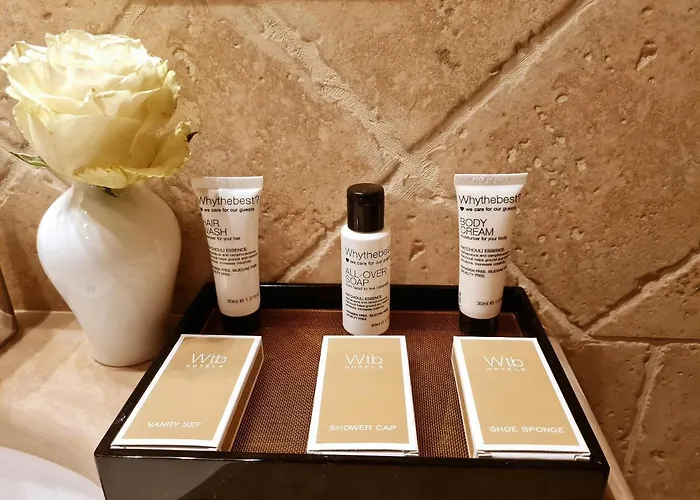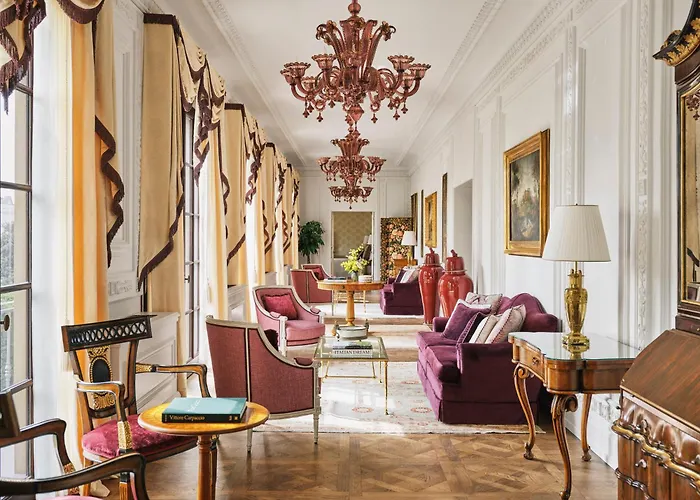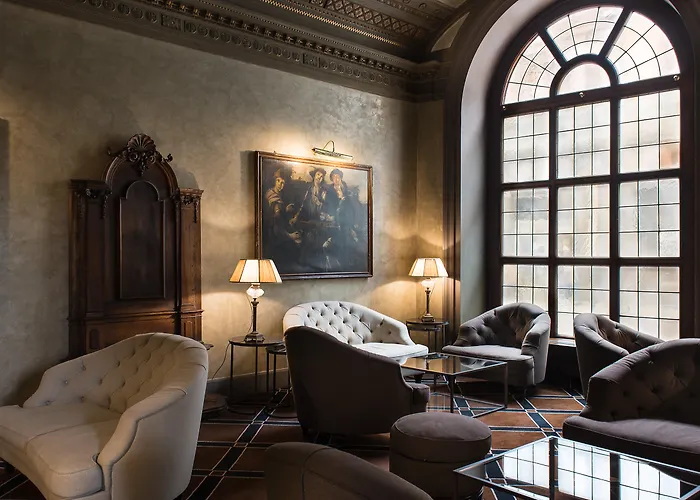Best Things to Do:
- 1. What to See at Palazzo Pitti in Florence
- 2. What to See and How to Visit Palazzo Pitti
- 3. 1 - Palatine Gallery
- 4. 2 - Royal Apartments
- 5. 3 - Modern Art Gallery
- 6. 4 - Silver Museum
- 7. 5 - Museum of Fashion and Costume
- 8. 6 - Porcelain Museum
- 9. 7 - Boboli Gardens
- 10. Hours and Prices
- 11. Online Tickets and Guided Tours
- 12. Useful Tips for Visiting the Attraction
- 13. Where It Is and How to Get There
- 14. Historical Notes and Curiosities: What to Know at a Glance
What to See at Palazzo Pitti in Florence
Residence of the Medici family, the King of Italy, and home to several museums of fundamental importance for the history of art, Palazzo Pitti is one of the most structured museum complexes to visit, but also one of the most beautiful. Let's discover together the wonders that make it one of the must-see attractions in Florence.
What to See and How to Visit Palazzo Pitti
Palazzo Pitti is a very complex structure that has expanded over the years, becoming a true museum complex. Various options are available for visiting it, allowing you to choose between a faster visit or a more comprehensive one. Its structure, comprising three floors, features the immense Boboli Gardens at the back, while the main entrance area includes a large square named after Pitti. The best way to visit Palazzo Pitti is undoubtedly by thematic areas and zones, which you will find described below.
1 - Palatine Gallery
The Palatine Gallery is the heart of Palazzo Pitti. Here you will find the major works of art ranging from the 16th to the 17th centuries. Among the names of artists you will find in this area are Raphael, Rubens, Titian, and many others. Inside, you must not miss:
2 - Royal Apartments
They are the ancient residence of the Medici family first, and the House of Lorraine later. Since 1865, these richly decorated and golden rooms have hosted the King of Italy during the period when Florence was chosen as the capital of the nation. The royal apartments are nothing to envy compared to other areas of the palace, thanks to the presence of some unmissable works:
- Throne Room created for King Vittorio Emanuele II of Savoy, featuring 17th and 18th century Japanese vases
- Blue Room houses portraits of the Medici family painted by Justus Sustermans in the 1600s
3 - Modern Art Gallery
Inside, you will find more than 2,000 works created from Neoclassicism to the present, including paintings and sculptures. Canova, Hayez, and the Macchiaioli are just a small part of all the artists who have worked on the pieces conserved here:
- Canova bust of Calliope
- Hayez The Two Foscari
4 - Silver Museum
This section, also known as the Treasury of the Grand Dukes, houses an important collection of precious objects from around the world, many of which come from the Medici family themselves. Among these works, which are not only silver but also made of ivory, hard stones, crystals, and much more, we highlight:
- Treasury of Anna Maria Luisa de' Medici a collection of Flemish-origin animals
- Vases of Lorenzo de' Medici are hardstone vases dating back to the 14th century
5 - Museum of Fashion and Costume
This is a unique museum, the first of its kind in all of Italy, which preserves over 600 examples of costumes used in theater and cinema, featuring names of fashion masters like Armani, Valentino, and Versace. All these garments, ranging from the 16th to the 20th centuries, are housed in the Palazzina della Meridiana, built by Pietro Leopoldo di Lorena. Among the unmissable pieces are the 16th-century dresses worn by Grand Duke Cosimo I de' Medici, his wife Eleonora, and their son Garcia.
6 - Porcelain Museum
This museum has gathered a vast collection of porcelain objects, belonging to the families that lived inside Palazzo Pitti. From Capodimonte ceramics to French and Viennese porcelain, they are just a small part of what you will see. Don't miss:
- the collection of pieces created for the court of Grand Duke Cosimo I de' Medici
- porcelains from the Doccia Manufactory
7 - Boboli Gardens
The Boboli Gardens are one of the most famous gardens in all of Italy. Among the best examples of Renaissance gardens in the world, it even inspired the gardens of the royal palace of Versailles. Designed in the 1400s and completed only in 1900, it has been continuously remodeled to its current version. Don't miss the Buontalenti Grotto, decorated with water games and stalactites, originally housing Michelangelo's Prisoners. See also: visit the Boboli Gardens - how to get there, prices, and tips
Hours and Prices
- Hours Tue-Sun 8:15-18:50, closed January 1, May 1, December 25
- Best time to avoid lines avoiding lines is very difficult. The ideal is to arrive very early, even slightly before opening time
- Ticket price full €16.00, prices can be viewed on the official site
- Discounts €8.00 for EU citizens aged 18 to 25
- Free admission free on the first Sunday of every month
Online Tickets and Guided Tours
Useful Tips for Visiting the Attraction
- Wake up early the ideal would be to reach the entrance by 8:15 AM
- Purchase the Florence Card with this card, museum entries are free for school and tourist groups, teachers, ICOM members, disabled individuals, and minors under 18
- Buy the combined ticket you can buy a single ticket that includes Palazzo Pitti, the Boboli Garden, and the Uffizi
- Priority ticket a skip-the-line ticket is recommended even on days with free admission
- Be aware of restrictions in some attractions and museums, bringing water or food is not allowed. Avoid flash photography in the presence of paintings
- Minimum time we recommend considering a minimum of 6 hours for the visit. Ideally, two days would be dedicated to the structure, considering that the Boboli Garden alone requires 3 hours for a visit.
Where It Is and How to Get There
Palazzo Pitti, home to illustrious families for centuries, was built in 1457 by the Pitti family. However, shortly thereafter, the Medici came to live in its rooms, which then became the residence of Grand Duke Cosimo I de' Medici. Later the palace was expanded, and the famous Boboli Garden was added, now an integral part of the Palace.













